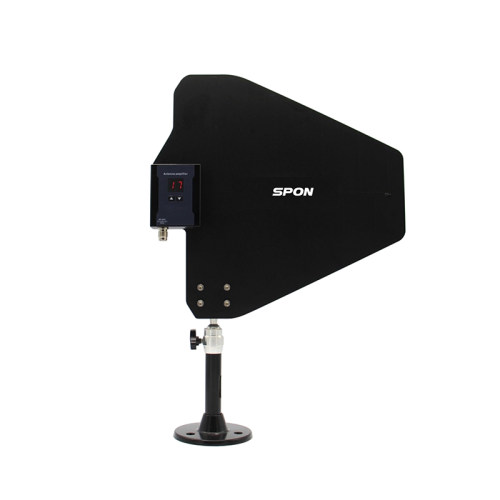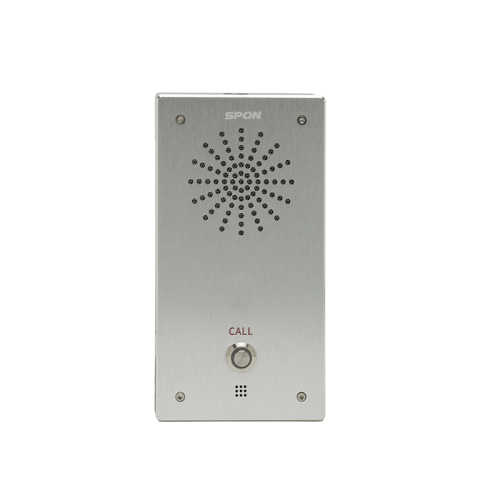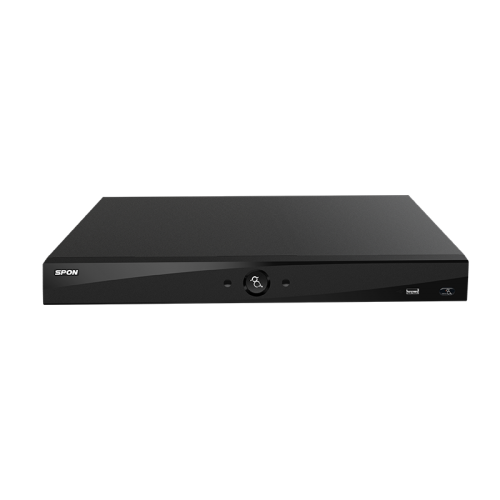Comprehensive Overview to Public Address Systems
Public address (PA) systems are commonly run into in different projects such as office buildings, domestic complexes, industrial workplace structures, schools, healthcare facilities, train terminals, airports, bus terminals, manufacturing facilities, and financial institutions - IP Speaker. This guide will give a detailed review of PA systems

Parts of a System
Regardless of the sort of PA system, it typically includes four major parts: source equipment, signal boosting and handling equipment, transmission lines, and audio speaker systems.
Source Tools
Songs Gamers: Made use of for history music.
Microphones: Includes standard microphones and zone-select microphones.
Voice Storage Devices: For storing business and emergency situation broadcast messages.
Signal Handling and Amplification Devices
Audio Signal Processor: Handles audio signal settlement, depletion, equalization, and so on.
Pre-Amplifier: Pre-amplifies audio signals.
Power Amplifier: Amplifies audio signals to drive audio speakers, supplying constant voltage result.
Transmission Lines
The service management platform software program permits the tracking center to apply centralized governance over the program and intercom communication systems. It helps with real-time device status tracking, fault medical diagnosis, and troubleshooting, strengthening system dependability and uniformity.
Audio speakers
Ceiling Speakers: Indoor, flush-mounted in the ceiling, continuous voltage or constant insusceptibility.
Wall-Mounted Speakers: Wall-mounted, consistent voltage or constant impedance.
Column Speakers: Free-standing, appropriate for exterior or indoor use.
Horn Audio speakers: High sensitivity, appropriate for outdoor or interior usage.
Concealed Audio speakers: For outdoor settings like parks or yards, developed to look like stumps, mushrooms, or rocks.
Audio Technical Requirements of PA Equipments
In day-to-day environments, normal sound stress degrees are:.
• Workplace sound: 50-60 dB.
• Typical conversation: 65-70 dB.
• Fabric factory sound: 110-120 dB.
• Small quality shooting: 130-140 dB.
• Large jet airplane noise: 150-160 dB.
Signal-to-Noise Ratio (SNR)
SNR gauges the ratio of the signal voltage to sound voltage, shared in decibels. A higher SNR indicates much less noise and better audio top quality. Usually, SNR should be at least 63 dB, with high-fidelity audio speakers getting to over 110 dB.
Input Level of sensitivity
This is the minimum input voltage required to achieve the rated outcome power. Higher sensitivity indicates less input signal is needed. Commonly, power amplifiers have an input sensitivity of 0.775 V (0 dB) to 1.5 V (+6 dB).
Maximum Output Power (Audio Speakers)
The maximum power a speaker can take care of in short bursts without damage.
Rated Power (Speakers)
.
The continuous power an audio speaker can deal with without distortion, gauged in watts (W) Ranked power is an average worth, and audio speakers can manage peak power as much as 2-3 times the ranked power.
Continuous Voltage vs. Consistent Resistance Outputs
Continuous Voltage (70V or 100V)
Uses voltage to drive speakers, permitting longer transmission distances and multiple speakers in parallel. However, sound quality is a little substandard contrasted to consistent resistance systems.
Power amplifiers need to match the voltage score of the audio speakers to avoid damage.
Continuous Impedance.
Uses current to drive audio speakers, providing far better sound top quality yet limited transmission distance (as much as 100 meters)
Resistance matching is vital; for instance, an 8Ω amplifier ought to be matched with 8Ω speakers.
Choose and Configuring Speakers
Audio speaker Choice
Indoor Spaces with Ceiling: Use flush-mounted ceiling audio speakers without a back cover.
Indoor Spaces with Just a Framework: Usage ceiling speakers with back covers or hanging ball-type audio speakers.
Outdoor Areas: Use weatherproof column audio speakers or horn speakers.
Parks and Gardens: Usage masked speakers created for visual objectives.
High-End Interiors: Use classy hanging speakers.
Fire-Safe Areas: Usage fireproof speakers with closed designs.
Speaker Configuration
Audio speakers ought to be dispersed equally throughout the solution area to ensure a signal-to-noise proportion of at the very least 15 dB. Typical background sound levels and recommended audio speaker placement are:.
High-end workplace hallways: 48-52 dB.
Large buying malls: 58-63 dB.
Busy street areas: 70-75 dB.
Audio speakers should be placed to make certain a sound pressure level of 80-85 dB in many atmospheres. Ceiling audio speakers should be spaced 5-8 meters apart, or 8-12 meters for background music only. For emergency situation programs, guarantee that no location is greater than 15 meters from the closest speaker.
Amplifier Sizing
Calculation Technique:
For solution and organization PA systems: P= K1 × K2 × ΣPo where:.
P = Total amplifier outcome power (W)
K1 = Line loss compensation factor.
K2 = Aging element (1.2-1.4)
ΣPo = Overall power need.
For fire alarm system systems, use 1.5 times the total variety of speakers.
Instance Computation:
For a background songs system with 10 audio speakers at 20W each: P= 1.26 × 1.2 × 10 × 20W × 0.7= 211W.
Final amplifier capability need to be 1.3 times this value: 211W × 1.3= 274W
Installment Demands
Audio speaker Placement
Audio speakers ought to be equally and strategically dispersed to satisfy coverage and sound high quality needs
Power Supply
Tiny PA systems can use routine power electrical outlets, while systems over 500W require a committed power supply. Power needs to be steady, with automated voltage regulatory authorities if essential. The power supply need to be 1.5-2 times the equipment's power usage
Wire and Conduit Installation
Use copper-core cords for signal transmission. Cables ought to be protected and transmitted via suitable channels, preventing disturbance from electric lines. Ensure proper separation in between power and signal lines.
Lightning Defense and Grounding
PA systems call for correct grounding to avoid damages from lightning and electric disturbance. Usage committed grounding for equipment and guarantee all basing procedures fulfill safety standards
Installment High quality
Wire and Connector Quality
Use premium cords and adapters. Ensure links are safe and secure and appropriately matched to stay clear of signal loss or disturbance.
Audio speaker Connections
Maintain right phase positioning in between speakers. Use dependable techniques for connecting cables, such as terminal or soldering blocks, and safeguard links from environmental damage.
Grounding and Security Checks
Validate all grounding is correctly set up and examine the safety and security of power links and devices settings. Execute comprehensive evaluations before settling the installment.
Testing and Modification
Examine the entire system to make sure all components function properly and meet design specs. Readjust settings as required for optimal efficiency.
Craftsmanship Needs for Public Address Solutions
Building Top Quality Demands
The quality of building and construction in a public address (PA) system job is crucial to satisfying style specs and customer requirements. It is necessary to purely adhere to the style plans, adhere to criteria, stay clear of rework and delays, and preserve thorough building and construction logs. Trick areas to focus on consist of:
Cable Television Selection and Installment
During the building and construction of a system, interest is often concentrated on devices, yet the selection of transmission cable televisions is additionally crucial for achieving satisfactory sound quality. Premium broadcasting equipment (amplifiers, speakers, etc) is needed, yet the high quality of the transmission cords also affects sound quality.
Parallel audio speaker cables have integral capacitance between the cables, which is not ideal for long-distance transmission as it can attenuate high regularities and create uncertain or smothered high noises. Twisted pair cables can effectively conquer this problem and ought to be utilized for long-distance transmission.
Shielded twisted set wires avoid electromagnetic interference and boost wire sturdiness, making them appropriate for long-distance setups. The diameter of the cables likewise influences performance. Thicker cords lower transmission loss however rise price and setup difficulty. The option of cords ought to stabilize performance and price, adhering to these standards:.
Usage balanced links for all signal connections in between PA system tools, with soldered endpoints.
For systems with smoke alarm features, use fire-resistant or flame-retardant copper-core cords.
Cords ought to be transmitted with steel conduits or cord trays, and ought to not share trays with illumination or power lines. When splicing is required, use specialized ports IP Paging System and leave appropriate cable television length at both ends with clear irreversible markings.

Connecting Audio Speakers and Program Lines
When linking audio tools, it's critical to make certain phase consistency between speakers and program lines. Stage disturbance in between audio speakers can create significant variations in audio stress levels, bring about uneven audio distribution. Adhere strictly to wiring tags and standard link techniques.
Three typical link approaches in PA systems are:.
Twisting Technique: Stripping insulation from cables, twisting them together, and protecting them with tape or clamps. This technique is easy but may weaken with time.
Screw Terminal Approach: Stripping insulation and inserting cords right into screw terminals, then tightening up the screws. This approach is frequently utilized.
Soldering Technique: Removing insulation, twisting wires, and soldering them with each other, then covering with tape. This method is extra appropriate and reputable for high-demand or humid settings.
No matter the method, usage tinned wire to facilitate soldering and stop rust. Usage PVC or steel conduit to safeguard exposed cords from joint boxes to speakers.
System Grounding
To reduce disturbance from the power system, different protective and functional groundings need to be established. Suggested technique is to install different copper strips for strong and weak electrical systems in their corresponding vertical shafts.
The total grounding resistance should not surpass 1Ω.
Construction Examination
Due to the complexity of PA systems with numerous connections and elements, thorough assessment is essential. General inspections ought to consist of:
Safety and security checks of equipment setup.
Confirmation of high-voltage line setups (SPON Communications).
Accuracy of terminations and connections
Unique attention needs to be offered to tool setups, such as resistance matching switches on audio speakers. Validate that switches are set correctly to stay clear of damage. Inspect the result option activates signal source tools, settings on signal processing equipment, amplifier connecting switches, and power supply settings.
Once these steps are confirmed, prepare for equipment debugging. Since debugging methods vary based on specific task needs, they are not covered thoroughly here.
Quality Records
Certificates, technical specs, and paperwork for speakers, enclosures, transformers, controllers, electrical outlets, amplifiers, sound processing equipment, secured wires, and so on.
Pre-installation, covert examination, self-inspection, and shared assessment records.
Records of style modifications and final illustrations - IP Paging Microphone.
Quality evaluation and analysis records for channel and cable setup
Records of PA system installation and debugging.
Major Setup Requirements
Equipment Setup Order
PA system equipment is usually set up in closets. For easier systems, a 1.0-meter cupboard might be adequate. Place frequently used equipment like the major broadcast controller on top for very easy gain access to. For more facility systems with a 2.0-meter closet, position often utilized devices in between 0.8 to 1.5 meters for convenience
.
Devices Link Order
Attach the computer to the main broadcast controller. Audio lines commonly connect directly to the input of the preamplifier or the initial channel of the mixer. The mixer outcomes are dispersed to every amplifier, and if making use of pure power amplifiers, connect to the INPUT sound input. Amplifier outcomes then link to addressable terminals, area control boxes, or area selectors, and finally to the audio speakers
.
Circuitry Factors to consider
For substantial wiring, separate sound and high-voltage line making use of various manufacturers' cables can help avoid confusion. Plan circuitry in breakthrough to stay clear of missing out on cords, which would require renovating the entire installation.
Power Supply
Make use of a specialized power sequencer for PA systems to guarantee uniform power monitoring and regular tool start-up sequences. The major power supply should consist of a ground line to protect equipment and protect against static-related risks
Tools Option
Do not rely solely on appearance; consider user reviews and market reputation. Products from credible manufacturers with comprehensive testing and experience are usually extra reputable
Wireless Microphones
For cordless microphones, pick UHF versions for much better array and signal security. For mobile usage, favor headset microphones.
Connection Cords
Use solid connections for durability and avoid counting on adapters, which can create loosened connections in time. Correctly solder links to guarantee toughness and convenience of maintenance.
Cabinet Installation
If making use of deep power amplifiers, make sure the cupboard measurements (e.g., 600x600mm) are suitable with the equipment. Action cupboard depth and spacing prior to installation.
Correct planning, top notch equipment, and careful installment and upkeep are vital to accomplishing optimal audio quality and dependable efficiency in a system.

Speakers ought to be put to make sure an audio pressure degree of 80-85 dB in the majority of environments. When linking audio tools, it's essential to make sure phase uniformity between speakers and program lines. Stage interference between speakers can cause significant variants in audio pressure degrees, leading to unequal audio distribution. Amplifier results then attach to addressable terminals, area control boxes, or area selectors, and finally to the speakers.